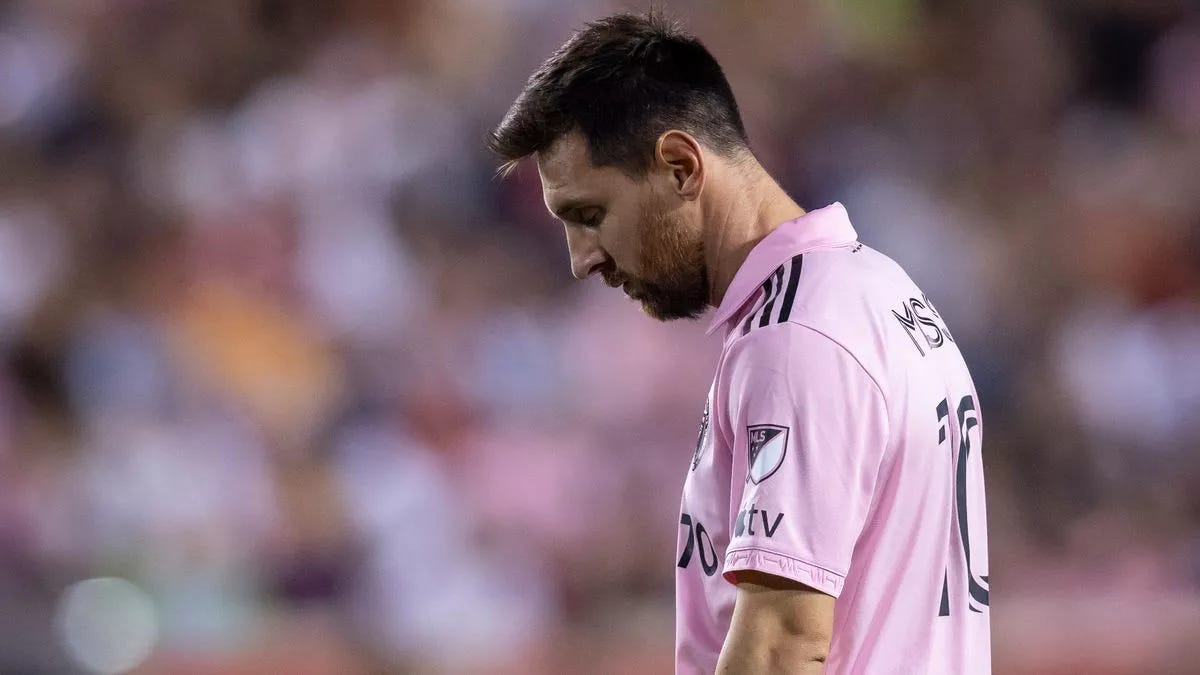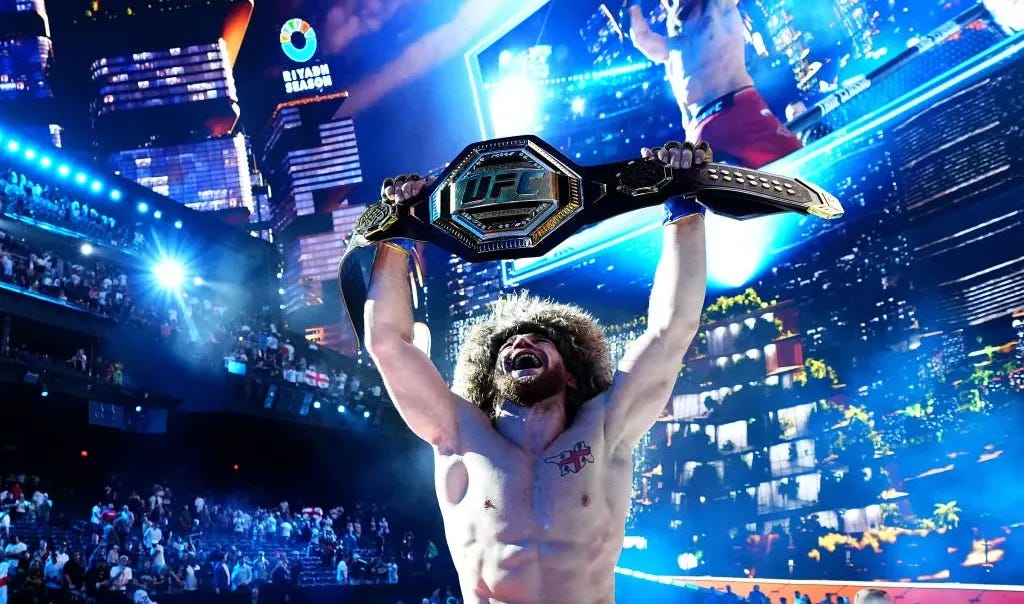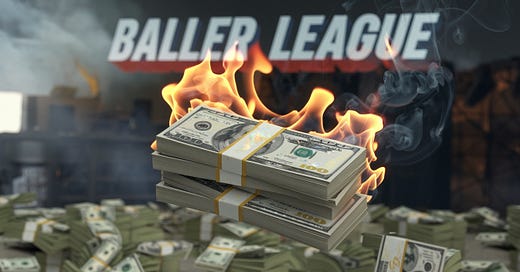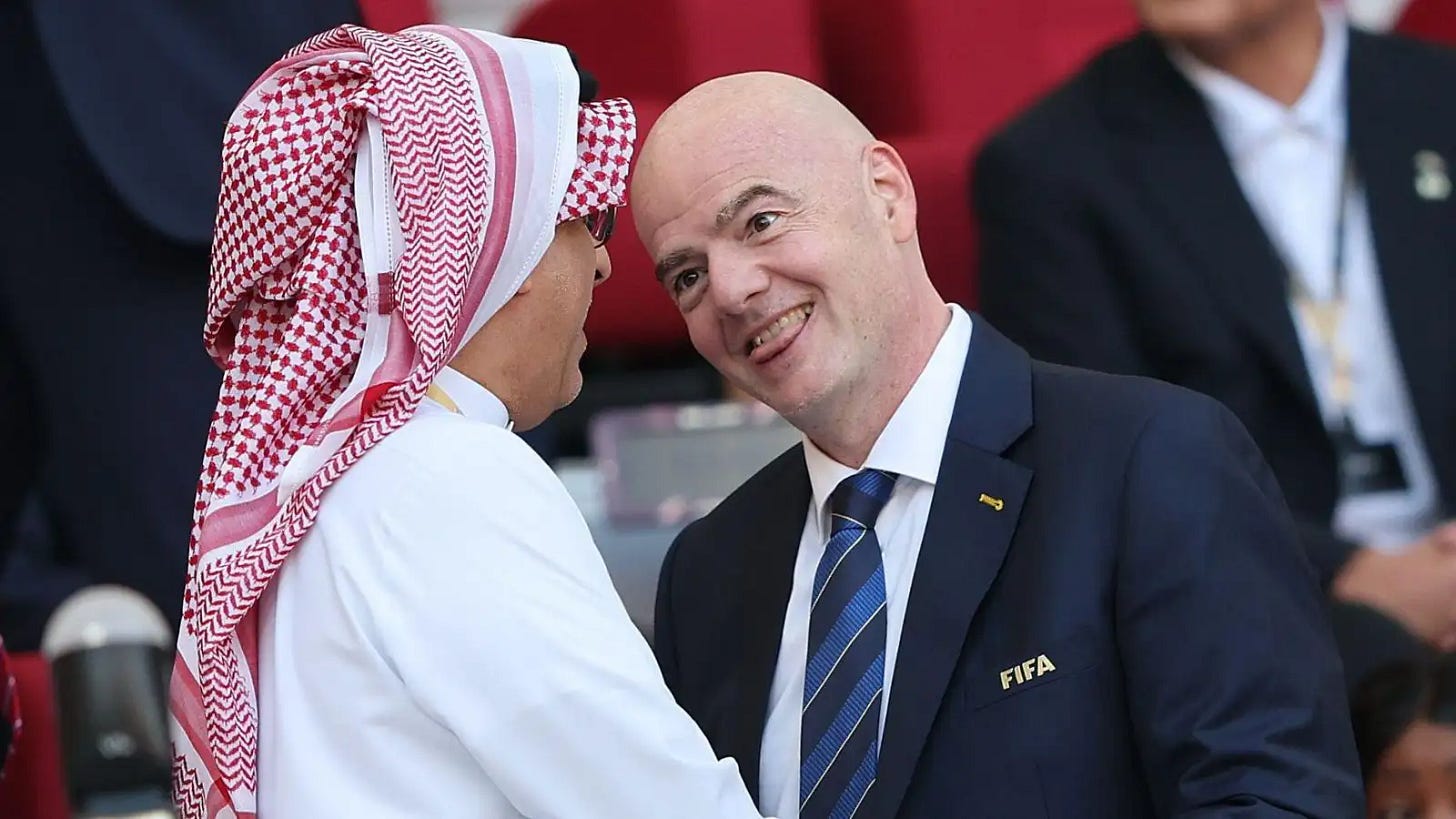Baller League Will Fail: And You Heard It Here First
Hype won’t save it, and the money won’t last.
Let’s get straight to it: Baller League is doomed. Not today, not tomorrow, but sooner than the people pumping millions into it would like to admit. And while the hype machine is in overdrive right now, deep down, I know this thing is burning bright and fast, and the crash is inevitable.
It’s a tale as old as time. Some deep-pocketed investors, enchanted by the idea that football needs a radical shake-up, throw obscene amounts of money at a shiny new league, convinced they’ve cracked the code. They haven’t. They never do. Or is there something more to it? Some suggest this isn’t just about reinventing football, but about creating a new market that sits outside FIFA’s regulatory grip. Word is, some of the financial muscle behind Baller League comes from investors in the gambling industry who see this as a chance to build a controlled environment for betting. One where they can manufacture odds, control the market, and generate new revenue streams. It is a dangerous game to play.
The Billionaire’s Fantasy vs. Football’s Reality
Baller League officially launches today, and you’re going to hear a lot about how it’s the ‘future of football.’ We’ve seen this script before. The Super League made the same claims. And look how that turned out: torched by fans, blocked by institutions, and abandoned faster than a European Super Cup in Saudi Arabia when broadcasters showed no interest.
Kings League? Sure, it gets clicks, but it’s a glorified YouTube series, not a viable long-term football competition. It’s built on gimmicks and influencer engagement, not serious sporting legitimacy. Even La Liga president Javier Tebas dismissed it as a 'circus', reinforcing concerns about its lack of credibility in professional football.
And MLS? It’s the perfect case study in how long, expensive, and complex it is to build a sustainable football league. After nearly 30 years and billions invested, it is finally gaining global relevance. Messi’s arrival, Apple’s landmark broadcast deal, and record attendance figures are all pushing the narrative forward. The league is growing, no doubt. But even now, it's not without challenges. USL’s emergence, with its push for promotion and relegation, signals growing demand for alternative structures in U.S. football. That’s a separate discussion, but one worth keeping an eye on. The point is this: building a league that lasts takes decades of strategic investment, robust media partnerships, and deep community buy-in. It’s a reminder that long-term legitimacy in football isn’t something you can manufacture overnight.

Hype Doesn’t Equal Sustainability
Yes, there’s a huge sum being pumped into Baller League right now. That part is obvious: they need to make it feel big just to get it off the ground. But longer term? This is a financial nightmare waiting to happen.
Massive Talent Fees – If you want people to care, you need big names, and big names don’t come cheap. They’ve spent heavily on YouTubers and creators, using them as the main draw with a sprinkle of retired football names. These guys don’t come out of their grandpa chairs for free. And once creators start realising their value, their agents will be knocking for bigger fees. Will Baller League be able to sustain that long term? Doubtful.
Production Costs Through the Roof – Baller League wants to be high-end. That means high-end stadiums, camera work, marketing, and everything else. Great. Who’s footing the bill in year three when the novelty wears off?
The UFC Lesson – People forget, but the UFC was haemorrhaging cash for years before it finally broke through. You know what saved it? A massive TV deal. Without a broadcaster or major brands willing to pay big money, Baller League will be running on borrowed time.

The Talent Drain Problem
Another reality check: if Baller League was such a game-changer, why are lower-league English footballers showing up for draft tryouts? Where are the elite players? If this was truly an elite league, it wouldn’t be built off players trying to escape National League contracts.
And that’s before we get into FIFA bans. FIFA isn’t coming for Baller League just yet, but if they ever feel it’s a real threat to their monopoly, expect the hammer to drop. Right now, they have bigger fish to fry: the Super League fight is far from over, and that battle will inevitably resurface. If Baller League starts making real noise, FIFA will have no problem enforcing bans and crushing any aspirations of legitimacy.
The Illusion of Creator Loyalty
Now, some will argue that YouTubers and influencers bring loyal audiences with them, that fans will follow personalities even if there is no club history. And while football fandom is evolving, with younger fans increasingly following players as much as clubs, loyalty still hinges on deeper emotional investment. Baller League is not offering that. Influencers bring attention, but attention is not the same as true fandom.
Football fandom is evolving. Gen Z fans follow players as much as clubs. But even in this shifting landscape, true engagement still relies on competitive stakes and emotional investment. Baller League isn’t offering that. Are people emotionally invested in these games? Do they care if their ‘team’ wins or loses beyond the entertainment value? Viewership alone isn’t enough. Without history, rivalry, and deeper stakes, it’s just another content product, not a football institution.
Influencers follow the money, not the badge. The creators being paid top dollar to participate will stick around only as long as the paycheques keep flowing. And when the numbers don’t add up anymore, they’ll move on to the next content opportunity, taking their audiences with them. There’s no organic community, no deep-rooted rivalry, no true allegiance. It’s entertainment, not sport.
The Sustainability Issue: What Happens When Costs Rise? Right now, Baller League is overpaying for big names to make noise. But here’s the thing: YouTubers don’t take pay cuts. Their agents will demand bigger deals, more sponsorship rights, and higher fees. What happens when the costs spiral and the revenue doesn’t scale up? The model collapses. And when the stars leave, the audience does too.
The Harsh Truth: Football’s Power Structure Doesn’t Allow Disruptors
Football doesn’t do outsiders.
UEFA and FIFA will never back this. Traditional broadcasters have zero incentive to put money behind a league that isn’t tied to the football pyramid. Fans don’t support leagues, they support clubs. And Baller League has none. No history. No loyalty. No longevity.
When Does the Collapse Start?
Best-case scenario? The money men keep it going for a few years before reality sets in. More likely? Once they realise the cheques from broadcasters and sponsors aren’t matching the outgoings, it’s a wrap.
So, you can enjoy the hype. You can be dazzled by the marketing, the big-name backers, the ‘football revolution’ talk. But just remember, this won’t last. And when it folds, don’t say you weren’t warned.
Thanks for reading GAMEPLAYER.
Through CAOS, GAFFER, and over 100 football contracts, transfers, brand deals, and equity-driven partnerships, I’ve seen power shift from clubs to investors, brands to athletes, and legacy to culture.
I break down what matters. Private equity takeovers, athlete-led media, billion-dollar sports IP, and the future of merchandising and streaming.
This isn’t just commentary. It’s about who’s making the real moves and what’s coming next.









Great read. I fear sports are in a bad cycle of "starting something new" for mere entertainment. It is testing the true nature of what sports always was and the loyalty of real sports fans.